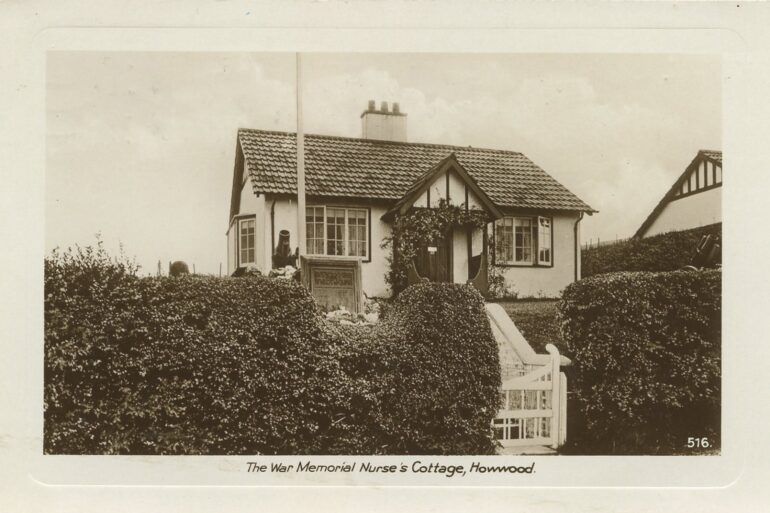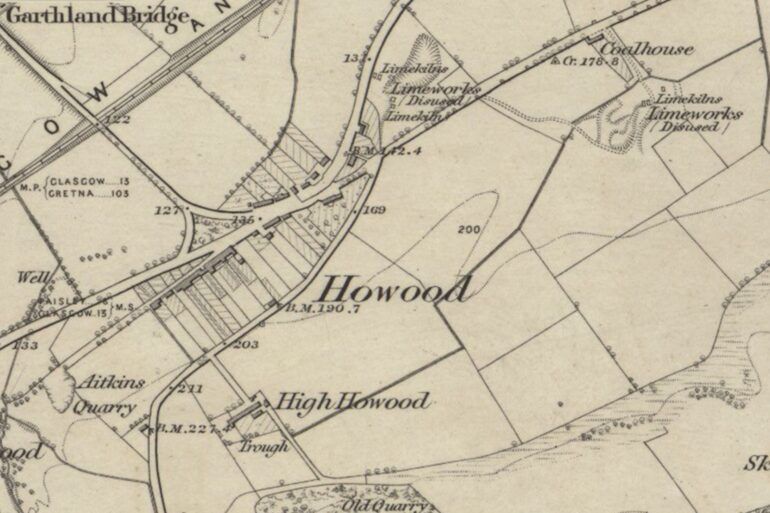Despite its relatively modest size, Howwood has a storied history that makes for a fascinating tale.
Said to have a name that’s quite literally derived from “hollow in the wood”, it’s widely believed that William Wallace – who was born in nearby Elderslie– and his men camped at what is now Roebank reservoir.
In terms of architecture to match its role in the mediaeval struggle for Scotland, Howwood is where the last remnants of Elliston Castle can be found. While its exact date of construction remains a mystery, this fortress fell under the control of what had been known since 1540 as the barony of Sempill. However,it was believed that it stood many years prior to that and in addition to the famed guardian of Scotland having once taken up refuge at the nearby reservoir, it is thought that he waged a battle at the castle too.
In 1760, construction of the “temple” on Kenmure Hill began. A site which provides breathtaking views of the surrounding area and would’ve previously been steeped in uninterrupted countryside, this structure– which was built for Colonel William McDowell– remains in place, albeit in ruinous form, to this day.
Over the years, there has been significant debate surrounding its use, with local experts believing that it was used as a hunting lodge as part of the nearby Castle Semple estate. While according to others, this octagonal building was used as the home of a sick child.
In 1770, the Howwood Inn– which still stands today under the moniker of The Boarding House– was constructed. Shortly thereafter, the area’s Limeworks were opened.
Orchestrated by the Sempills of Lochwinnoch and the Houston’s of Johnstone in 1775, the area’s reliance on agriculture meant that a demand for fertiliser sprung up and as a result, this site at Corseford was greenlit.
Complete with a large quarry and coal mines, it enlisted both clamp kilns and drawn kilns which were in operation for upwards of a century until their closure in 1886. Today, the remnants of it remain in the shape of the The Midtown draw kiln. Located near the Skiff Woods, it is the the only upstanding draw kiln which can still be found within the boundaries of Renfrewshire
While it was primarily seen as an agricultural area in the 18th century, this would all change as they transitioned into the textiles industry.
In keeping with their neighbours in nearby towns and villages, Howwood residents would become involved in the production of linen, cotton and more. Where other towns were synonymous with the manufacturing of the fabric itself, Howwood’s vast expanses of land made it the perfect site for bleachfields which could serve the major factories. Beginning with the opening of Midtownfield in 1830 before Bowfield would follow suit in the following decade, the latter part of the Midtown would later become a cotton mill in its own right. In addition, many of the Howwood residents would travel to the nearby Corseford Mill in Johnstone for employment. In essence, making this village into an early version of a satellite town.



